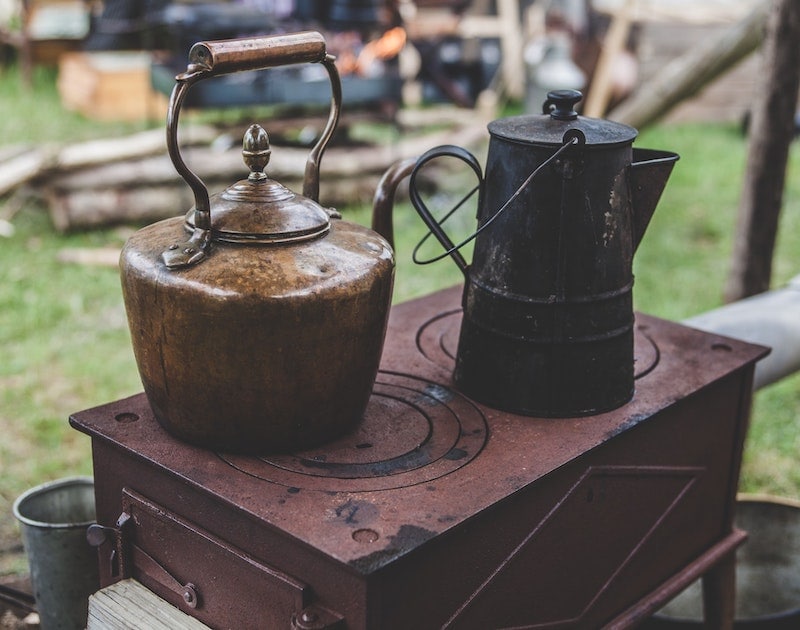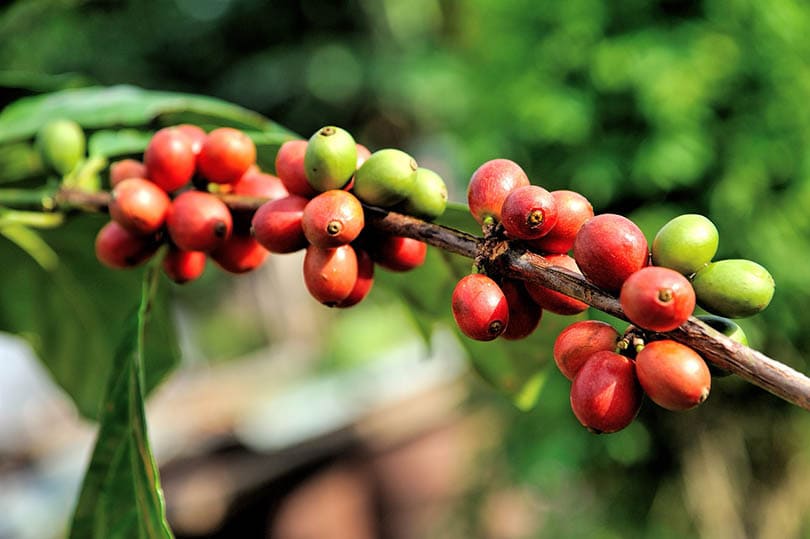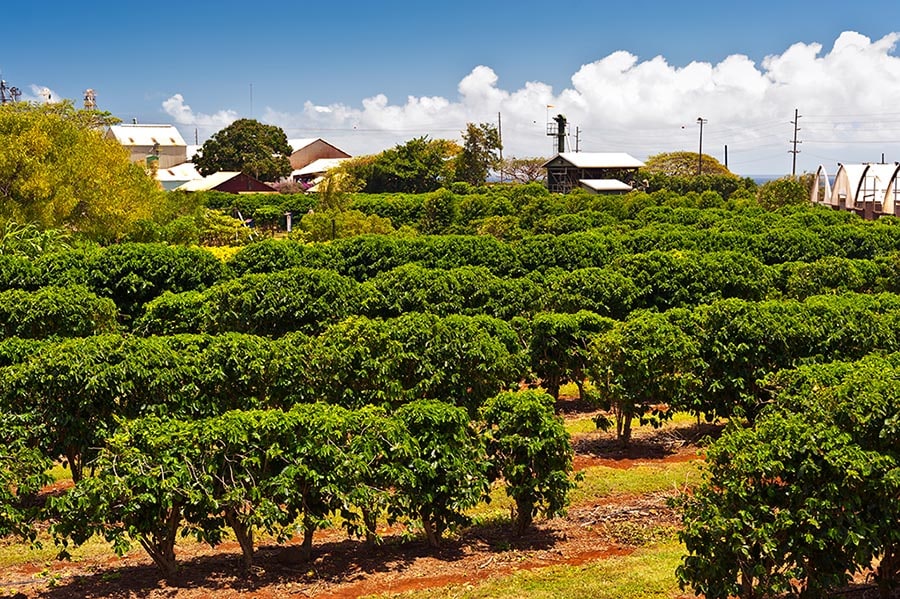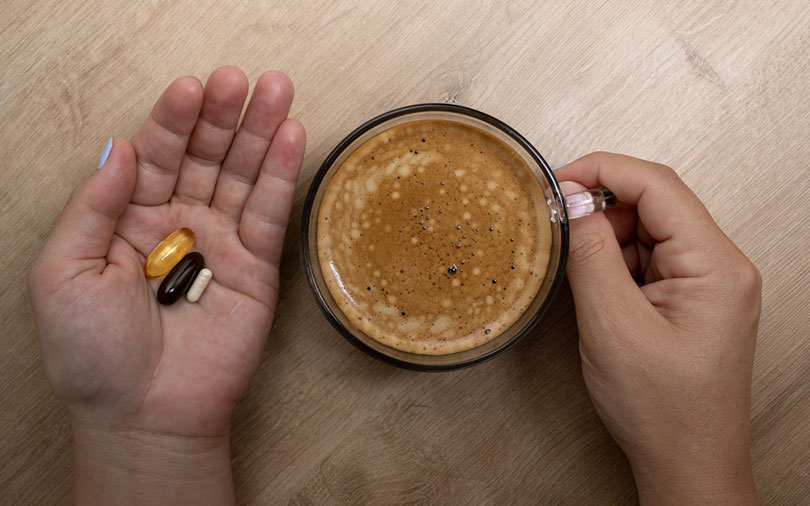
Coffee is a favorite beverage in the United States and the rest of the world, and many people drink it for breakfast to start their day and to relax at the end of it. Coffee has taken quite a long journey from its origins in Ethiopia to the breakfast table. If you’re interested in learning more about the history of this fantastic beverage, keep reading as we look at the history of coffee from its beginnings to today. So where did coffee originate? Let’s find out!

The History of Coffee
Where Did Coffee Originate? The Legend of Kaldi
If you want to claim to know your coffee history, you need to know the legend of Kaldi. This legend states that sometime in the Middle Ages, before about 1400, an Ethiopian shepherd named Kaldi discovered coffee when he noticed that his sheep seemed more energetic after snacking on some berries, and some of them even refused to sleep at night. When Kaldi reported the news to the local monastery, the priest there made a tea of the beans and found it easier to make it through late-night prayer. The priest shared the secret with other monks, and coffee was born. You might say this is when coffee was discovered.
In which form is coffee first grown? Coffee starts as cherries, which are likely the “berries” from the legend.

Arabian Peninsula
Coffee quickly spread to the Arabian Peninsula. By the year 1400, coffee trees were growing in Yemeni, and Arabia, and only 100 years later, it was a popular beverage in Persia, Syria, Turkey, and Egypt. In these areas, coffee was not only enjoyed at home. There were also cafés called qahveh khaneh that were not that much different from the cafés of today. People would congregate and listen to music or watch a play, converse, catch up on the local news, and enjoy good coffee. Mecca, located on the Arabian Peninsula by the Red Sea, was an important trading center, so news of a great-tasting beverage that boosted energy spread quickly.
European Coffee
Coffee became so popular that news of it had spread to Europe by the 1600s, and when the Venice clergy found out about it in 1615, they condemned it as a drink of the devil. However, coffee had already become so popular that its condemnation caused quite a controversy. They asked the Pope to step in and offer a solution, so he tasted the beverage himself and found it so satisfying that he gave his approval, and the people were allowed to drink it. Coffee houses quickly spread to other parts of Europe, including Austria, France, and Germany. They called the coffee houses, “penny universities,” because you could buy a coffee for a penny and learn about the local news and other happenings from the many other patrons. People also started to replace their morning beer or wine with coffee, which helped more people have a more productive day. By 1650, there were more than 300 coffee shops in London alone, showing just how popular this beverage had become.


History of Coffee in America
Coffee finally came to America in the mid-1600s, shortly after the coffeehouse boom in London. While Americans did like coffee, they were still particular to tea. However, in 1773, when King George III imposed the heavy tea tax that led to the Boston Tea Party, Americans quickly named coffee their new favorite drink. Thomas Jefferson even called it the favorite drink of the civilized world.
Coffee Plantation History
Naturally, as the demand for coffee grew, there was a need to plant more trees. The Dutch were the first Europeans to obtain seedlings and were able to start a profitable production of coffee on the island that is now Indonesia. Their crop was so successful that they could expand onto the islands of Sumatra and Celebes.

Plantations In the Americas
In the year 1714, King Louis XIV of France received a gift of a young coffee tree from the Mayor of Amsterdam that he planted in the Royal Botanical Garden. A few years later, in 1723, a young naval officer named Gabriel de Clieu pushed through bad weather, pirate attacks, a saboteur, and more to bring a seedling from the king’s plant to Martinique. Once they got it planted, it grew quickly, and in only 50 years, more than 28 million trees were growing from a single seedling. This seedling is responsible for all the coffee trees growing in the Americas today and in the Caribbean. Today, these trees bring in more than $1 billion in profit for several countries worldwide.

Coffee History Facts
Are you a fan of trivia? Here are a few coffee facts to know!
- Many people believe that a sheepherder discovered coffee sometime during the Middle Ages.
- Priests first used coffee to help with long hours of prayer.
- Once people tried coffee, they immediately set up coffee shops to enjoy it.
- Venice clergy members once thought that coffee was an invention of Satan.
- Early European coffee houses were called penny universities.
- Tea was America’s favorite drink until the Boston Tea Party.
- Thomas Jefferson called coffee, “the favorite drink of the civilized world.”
- The Dutch were the first people outside Arabia to grow coffee.
- All coffee in the Americas comes from a single seedling.

History of Coffee Timeline
- Before 1400 — According to legend, Kaldi the shepherd discovered coffee.
- 1400 — Coffee trees were growing in Yemeni, Arabia.
- 1500 — Coffee was a popular beverage in Persia, Syria, Turkey, and Egypt.
- 1600 — Coffee reaches Europe.
- 1615 — Pope Clement VIII declares coffee is not the work of Satan.
- 1650 — More than 300 coffee shops open in London.
- 1650 — Coffee comes to America.
- 1675 — The Dutch obtain seedlings to grow new coffee trees.
- 1714 — King Louis XIV of France received a gift of a coffee tree from Amsterdam.
- 1773 — America chooses coffee as their favorite beverage.
- 1800 — More than 18 million trees are growing from a single seedling obtained from the tree of King Louis XIV of France.

Final Thoughts
To sum it up, coffee originated in Ethiopia and quickly spread throughout the world. Many countries still depend on coffee as a big part of their economy, and many people need it to get going in the morning. It’s as popular today as it ever was, and many experts expect it to continue to rise in demand, especially as more people are working from home and need that extra pick-me-up. Coffee history is pretty fascinating!
Featured Image Credit: Nile, Pixabay













